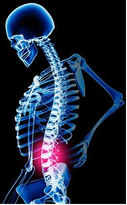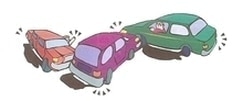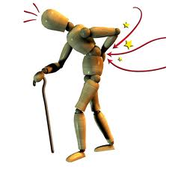A Guide to Neck Pain and Spinal Pain Here at Soft Touch Chiropractic in Porter Ranch California, usually we talk about postural distortion or imbalance of the spine, most of the time we are referring to the root cause, which is the misalignment of the pelvis or the sacrum. However, stress in the knees or heels can also cause postural distortion or imbalance of the spine. Knees and heels can cause imbalance in the pelvis or sacrum which in turn, affect posture and the spine as a whole. We usually don’t associate neck distortions with upper and lower back pain or with spinal misalignment. However, your neck misalignment can create misalignment all the way down to your low back causing pain in the upper and lower back. When our first two vertebrae, also known as C1 Atlas and C2 Axis, misalign, they usually press and create pressure on our spinal cord especially at the base of our brain. By creating this pressure, C1 and C2 become misaligned and all the messages that travel via the spinal cord are interfered with. Your body is designed to balance itself. In physiology we call this phenomenon homeostasis. When there is pressure on C1 and C2 the body’s reflexes are activated in order to keep the body balanced. When these reflexes kick in to do their job of creating balance in the spine, we call it compensation. If you were to observe a person with a misaligned C1 and C2, you would notice that their heads were not tilted to one side. They would appear to be standing straight in spite of their misalignment because of the phenomenon of compensation. The reflexes cause other parts of the spine to misalign and therefore balance out the misalignment in the neck. Now, for sake of argument, let's say you sleep on your face all night and you rotate your first two vertebrae and those vertebrae press and misalign another vertebrae in your neck, your upper or lower back. They have to compensate in order to keep your body erect and straight. The compensation in the lower spine is worse than the original misalignment in your neck and can be very painful. Please watch the video below made by Dr. Masoud Shamaeizadeh, DC. Click the Like button below
1 Comment
|
New Patient SpecialArchives
July 2024
Categories |


 RSS Feed
RSS Feed
